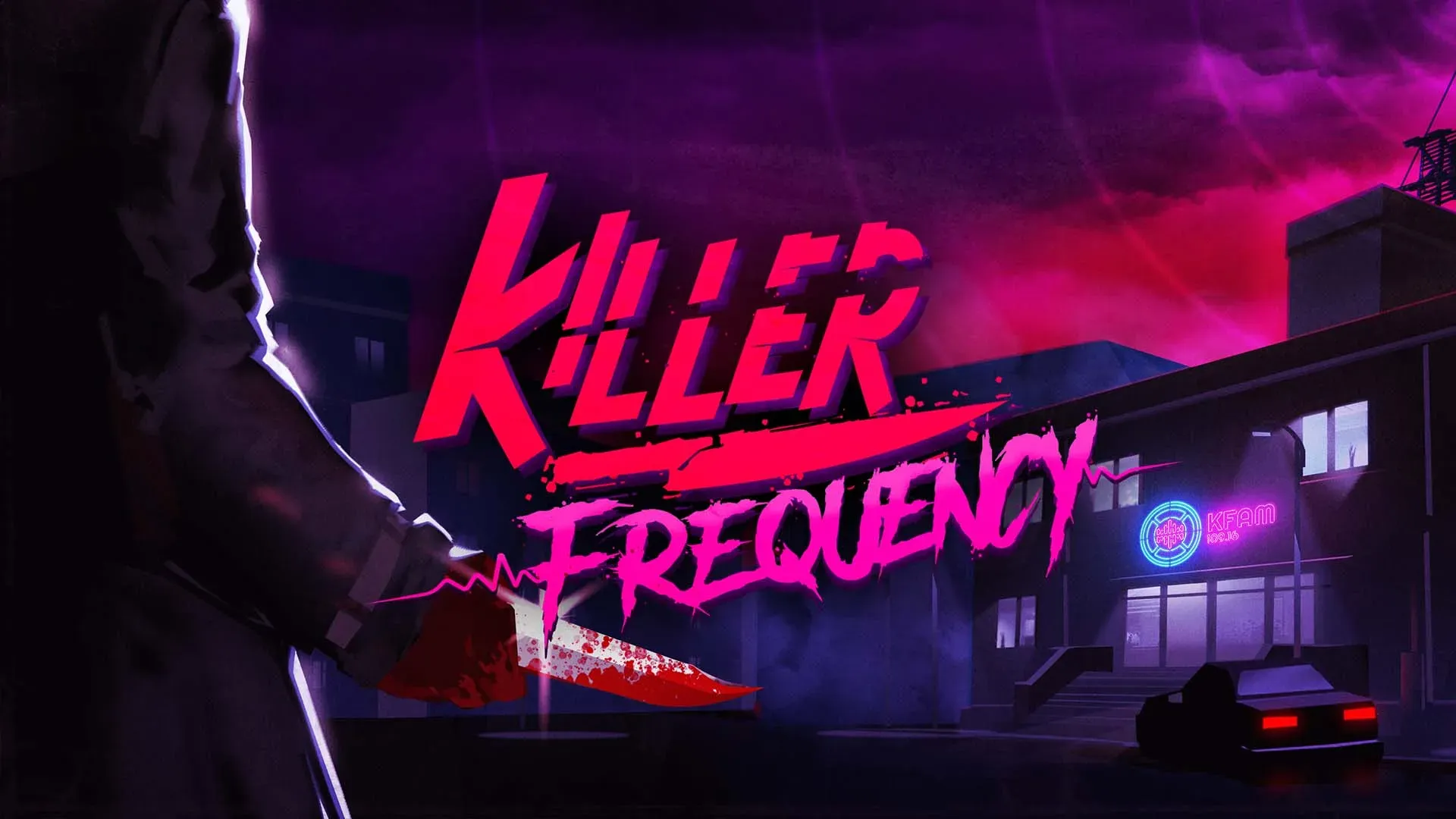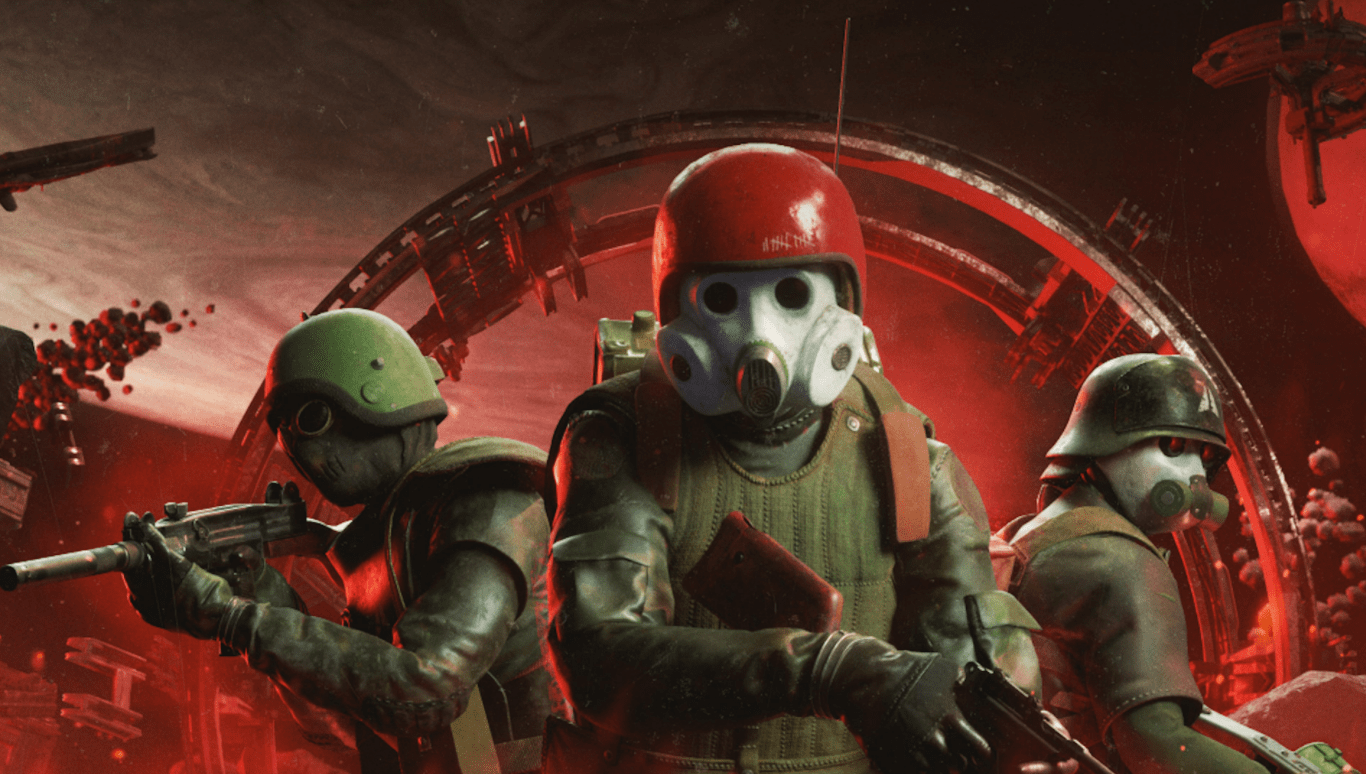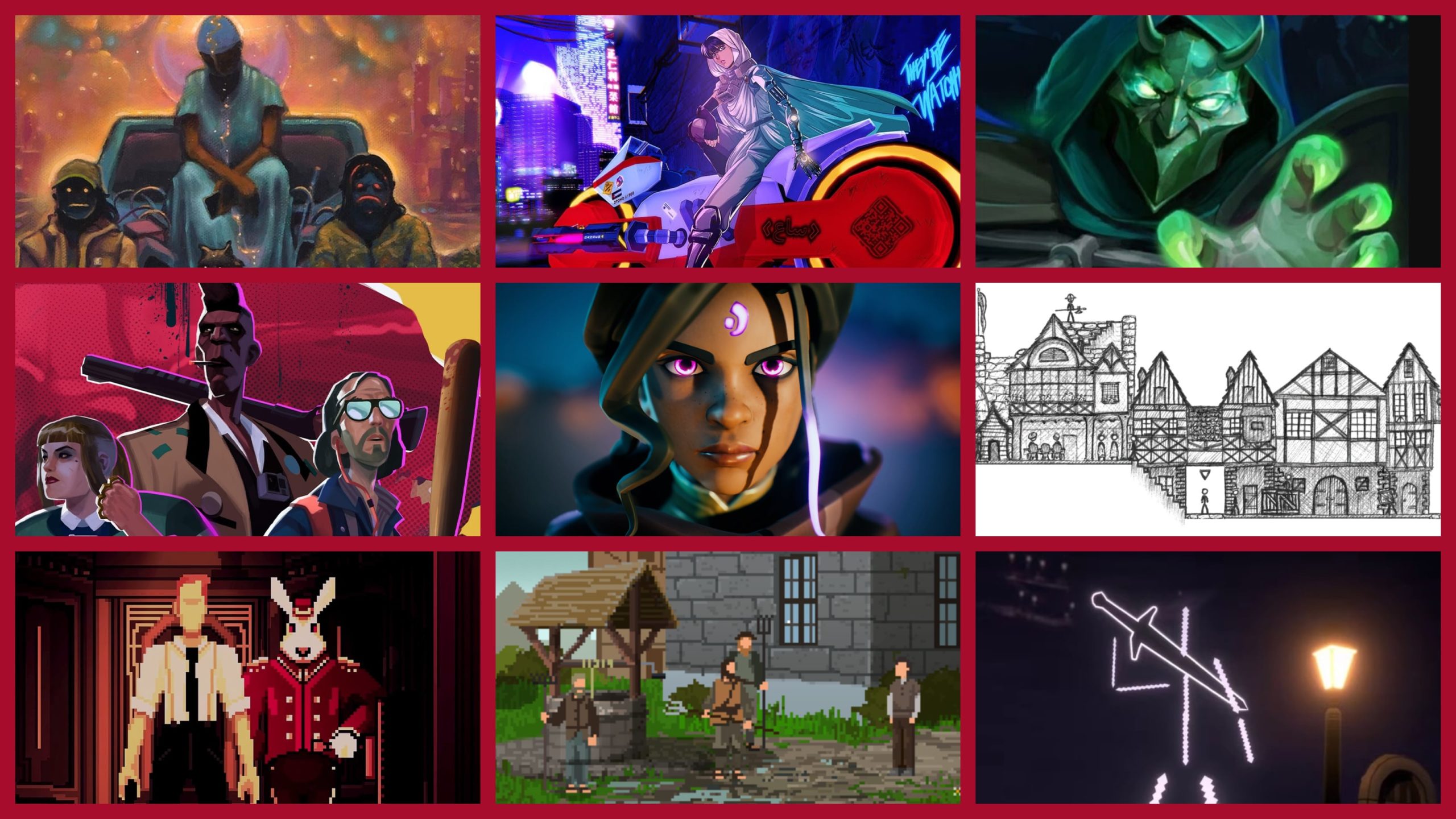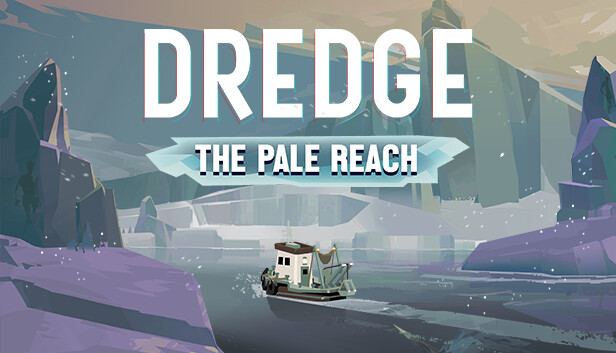Killer Frequency Review (PS5) – Radio Graves
Killer Frequency interrupts your scheduled dredge through your backlog to bring you something new and shiny to distract you. I say new, as it’s a brand-new game from Team17, but it’s a journey back to the 80s with a synthy B-movie horror flick vibe that just might make you scream.
I’m someone who usually checks out a trailer when finding out about a new game, to help get a sense of what it has to offer. At first glance, Killer Frequency looked like a first-person horror puzzler that bleeds 80s synths with a bunch of possible spinning plates to think about whilst surviving the night. Whilst my assumption was partially correct, it definitely had more to offer than I expected after playing. There are still some good slasher-esque twists thrown into the mix, but is this a game worth taking a stab at? Or a cold body. Let’s get into it.
Thriller Night
The year is 1987. You play as Forrest Nash, a DJ filling in the late-night slot with a show called ‘The Scream’ airing across a small town in America named Gallows Creek for KFAM radio. It’s business as usual for Forrest and assistant Penny until a phone call comes in from Police Officer Leslie revealing that the Police Chief has been murdered.
You’re given the reins to the 911 number as Leslie has to go out of town to call for backup. In the meantime, a murderer known as The Whistling Man is on the loose on ‘whistling night’ and the Sheriff is just the start of more potential victims who call into you for help during the course of the story. Player decisions affect the fate of these characters and mistakes have consequences.

Stakes are high during these calls as you have to help each victim over the phone by talking them through plans and solving puzzles all from the comfort of your booth. Killer Frequency is told entirely from Forrest’s first-person perspective which is fully voice-acted. The cast is big for a humble setting of one area – the studio – but the size leaves room for differences in the quality of voice-acting.
Whilst protagonist Forrest Nash and colleague Penny – who you see only as a silhouette in the other booth on the decks – are both standouts with their performance; characters with less air time break the immersion by coming off flat or stilted in their performance. Nash is a charming yet loathsome outsider who definitely has an arrogance for being a DJ in Chicago, whilst Penny’s down-to-earth and welcoming presence humbles Forrest, making them an unlikely and lovable pair.
Bleeding On Wax
I’ve played the game a couple of times now for the sake of trophies, and after I knew the plot I was just enjoying the banter the two had. It doesn’t fill out the broad strokes of the story, but it does so much to make you feel for them.
If Killer Frequency didn’t have visual puzzles for you to decipher, it would easily fit into being a radio play as a lot of your time is listening to the story unfold rather than seeing it for yourself. It’s novel in premise and execution, but the tense scenarios of townsfolk being stalked and potentially murdered felt like a bite with no teeth.
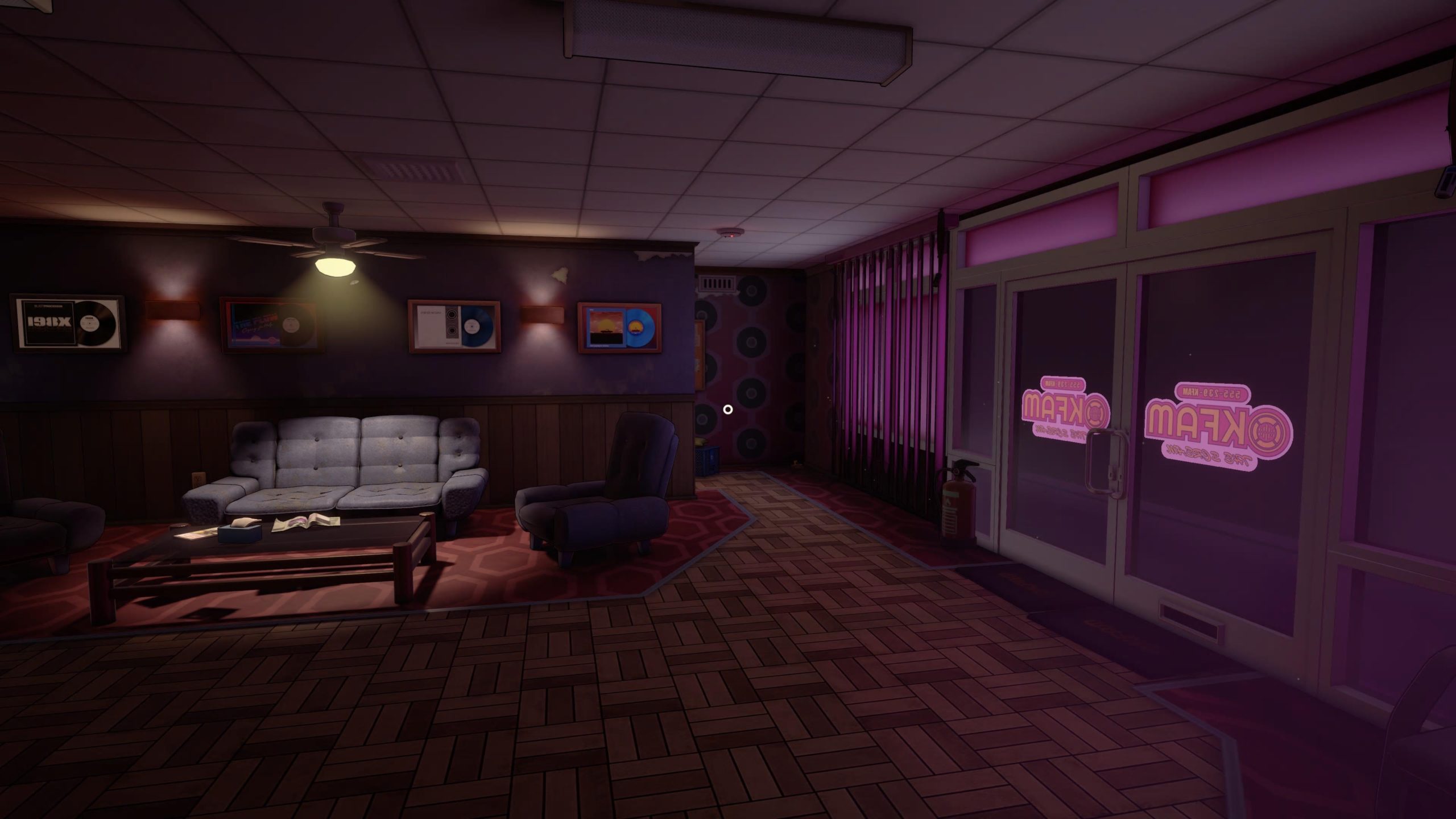
That’s not to say there’s no narrative merit in Killer Frequency. Reframing it as a murder mystery more than a horror, I stopped expecting the scares and instead appreciated the mystery of who The Whistling Man is, as if it was a whodunnit. The story unravels in a satisfying interconnected web of shared history in Gallows Creek and by the end of it all you feel like a new chapter in that story.
On top of all that, the varying subtlety of references to other existing franchises like one street being named Haddonfield or some of the carpet looking straight out of the Overlook, shows the game’s attention to being a love letter to that period of horrors. Less so references, but championing that B-movie charm are the records you play during the game like ‘Cry for Help’ by The Flow or ‘Stab in the Twilight’ by Knife and Ez. It all creates an immensely realised world that I half expected some film grain or noise like a bootleg VHS tape.
Listeners Beware, You’re In For A Scare
Setting it in one location limited the story in some ways but made up for it in a creative way to deliver it. This is the same case for Killer Frequency’s gameplay. The gameplay loop of saving the caller from the killer is relaying information for them to act on to escape. Multiple dialogue options, sometimes even timed dialogue options pop up by the mic to continue the narrative forwards.
Whilst the puzzle aspect leans on this also, using your common sense to pick the right choice some of them require extra paraphernalia to execute. For example, an early puzzle has a caller running to their car but they dropped their keys to start the engine along the way. The Whistling Man is approaching as you can hear their whistle, what do you do?
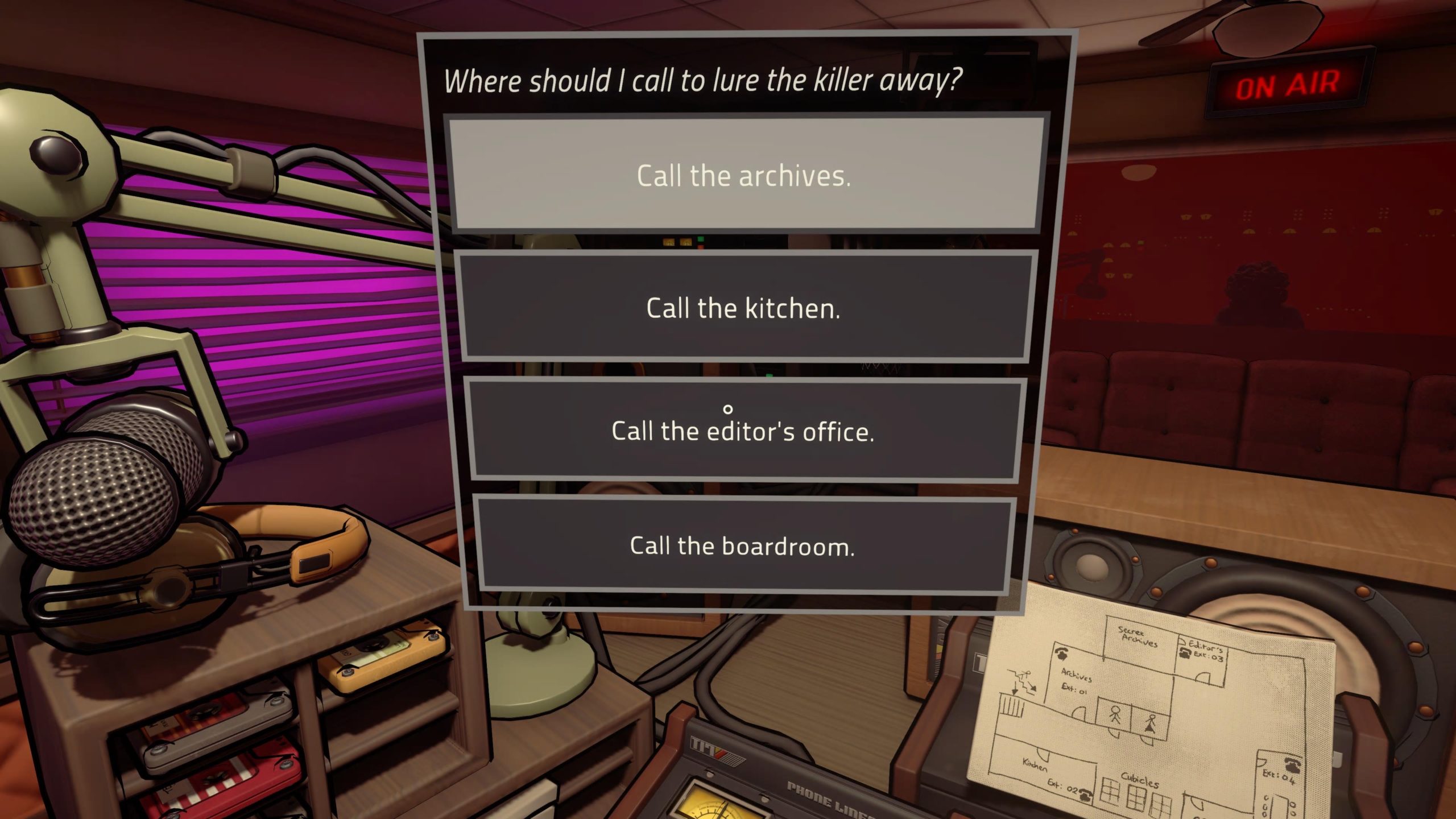
The victim has a toolbox in the trunk, maybe they can use that to escape. You then traipse the dimly lit foreboding studio to the office of colleagues that run a car-based show for any clues. You find a magazine that has a feature on how to hot wire your car – not exactly nuanced but it works. It’s a step-by-step that has variables depending on car type so it’s not just a case of relaying what’s on the page but deciphering the situation and giving the right info.
Mess up and they’re dead, so the pressure to be right is definitely there, but the frustration of feeling passive is there too. Puzzles throughout don’t deviate too far from that example so that feeling persisted. I wasn’t bored, but I wasn’t fully engaged either with the gameplay.
Killer Instincts
In the downtime from saving lives, you do have a radio show to host in the meantime. The DJ equipment has a fair few buttons for you to mess around with; a record player to spin some vinyl, caller buttons to take calls, and a soundboard to implement boos, cheers etc. to name a few. I started to get Not For Broadcast flash backs but this isn’t performance based in the same way, which I appreciated.
There isn’t a focus to put on a “good show”, rather than an attempt to immerse you into the role with no pressure. It’s successful as a story mechanic but so many of the DJ options aren’t necessary at all. I never used the soundboard apart from a trophy, changing the volume of the various channels makes no difference in-game and you’re not scolded if you just cut the music to take the call.
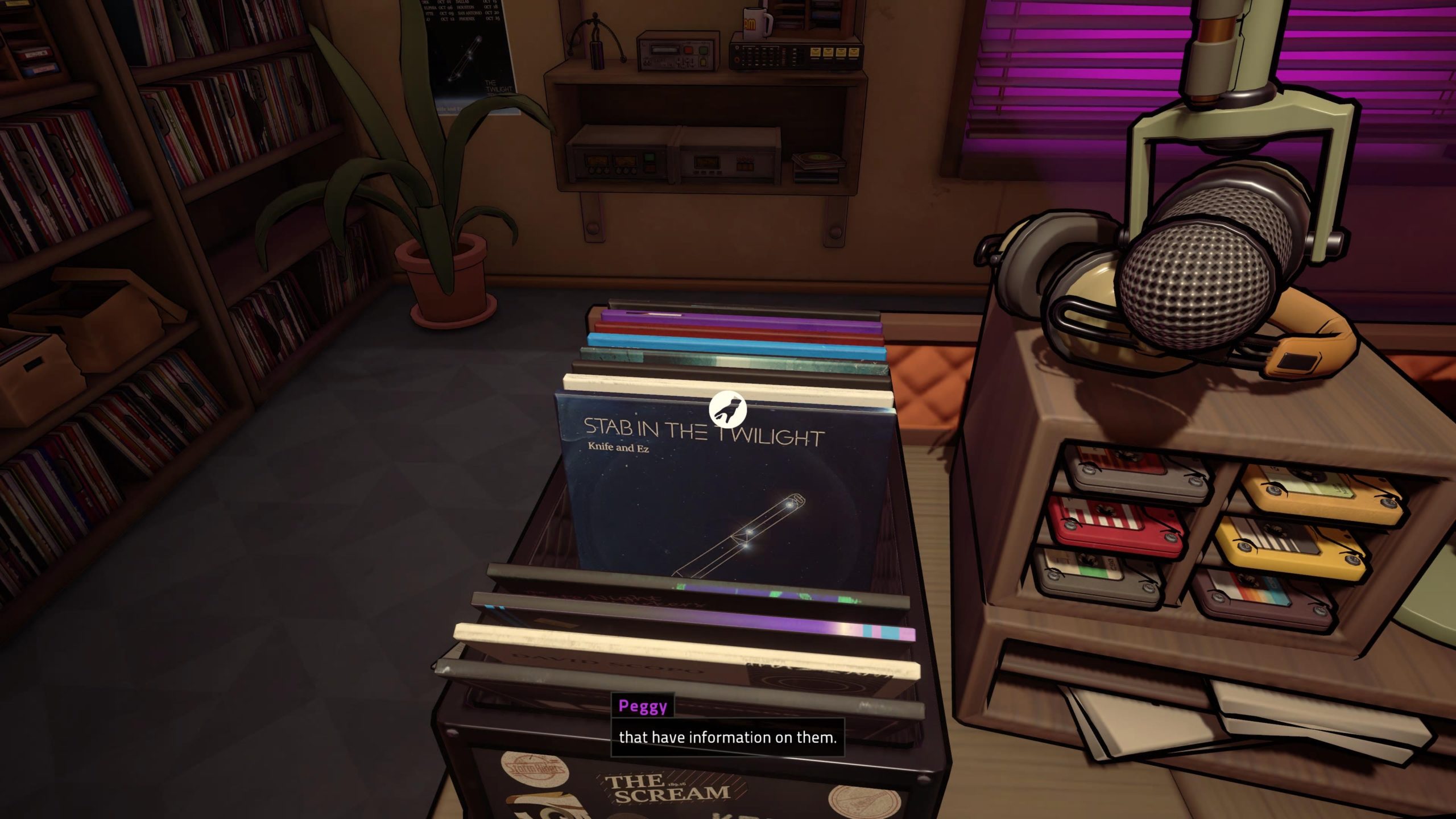
Maybe if Killer Frequency integrated some of the puzzles with the use of the DJ mechanics I would have appreciated the overall design more. Instead, I found myself grabbing the crumpled pieces of paper on my desk and throwing them to the basketball hooped bin at the other side of the rum as the narrative played out. It’s welcome even if a little distracting but some of the dialogue is lengthy so you are just standing in the room looking at nothing a lot. It’s not perfect, but the game isn’t too long (beatable under 4 hours for a trophy) and I appreciate the commitment to what it goes for.
Murder on the Dance Floor
Speaking of commitment, Killer Frequency’s commitment to the 80s vibes is wonderful. I don’t have any nostalgia for the period as a blasted millennial myself but the films, aesthetics and music are definitely some of my favourites. Windows are neon-drenched for no good reason, but the cheesy execution almost feels quintessential to the mis-en-scene. Killer Frequency doesn’t mind being tongue-in-cheek sometimes and that 80s attitude is replicated so nicely.
The game’s not quite cel-shaded as it goes for almost a realistic look, but some of the environment or objects have really thick outlines reminiscent of TellTale games and it’s gorgeous for it. The lighting is alluring and atmospheric, with the colours being bold, I was immediately impressed.
Then there’s the 80s synth music created just for the game that really bolsters the visuals tenfold. It’s not a massive soundtrack but there are no skips for the main roster of vinyls in your collection. You can collect a few more that are stashed away around the studio that do go to different genres adding variety, but I couldn’t help but love the synthwave. It’s also a nice touch to make the music diegetic as you’re often creating your own needle drop moments.
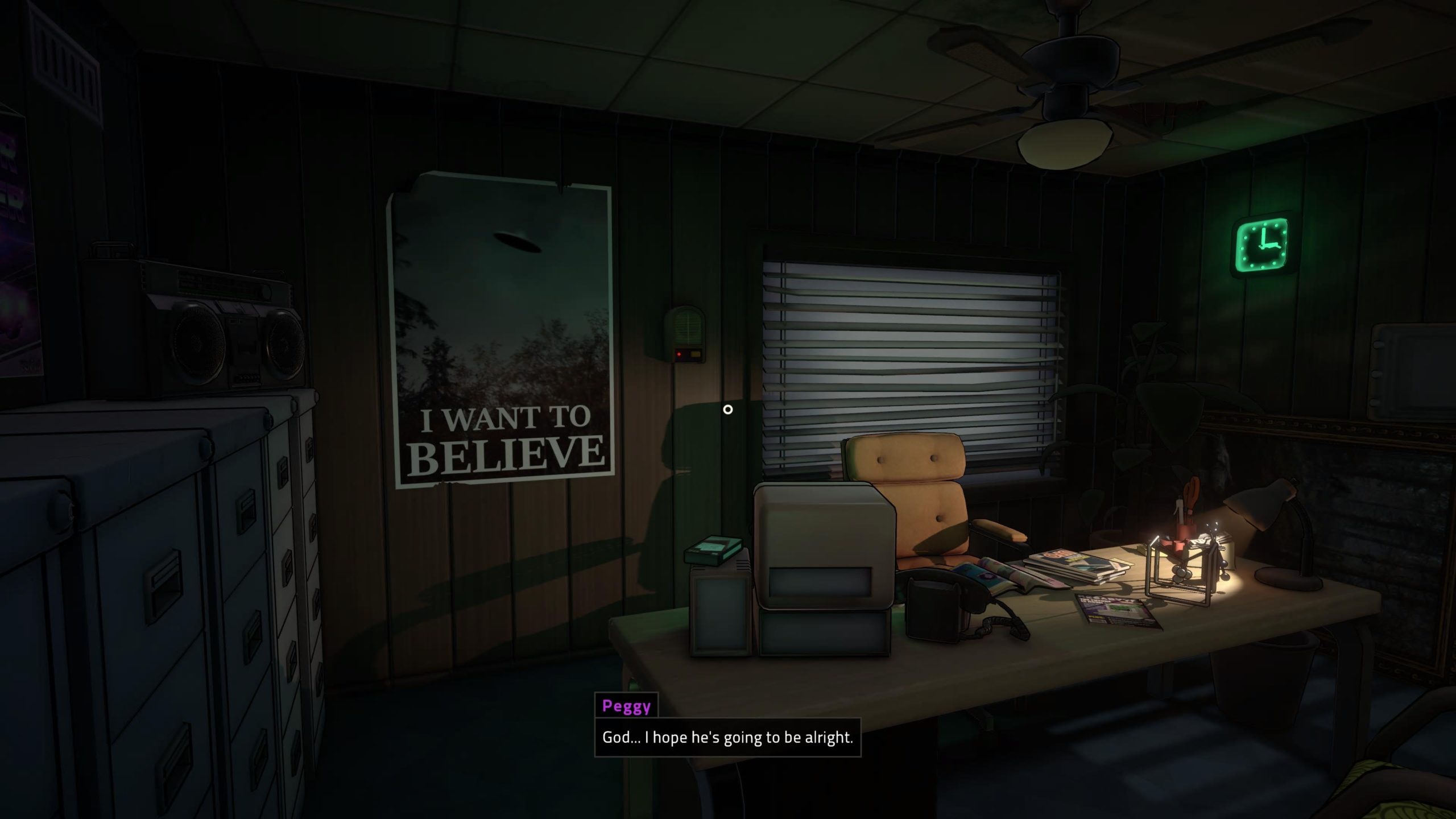
Evil Dies Tonight
I came away from Killer Frequency ultimately enjoying it. I really felt invested in the world the game had to offer. Despite only being in one building, it felt so much like I saw all of Gallows Creek. Meeting the townspeople, good or bad but all exuding their personalities with the two lead characters Forrest Nash and Penny being portrayed – cheese and all – perfectly.
Though I did feel passive throughout the narrative, despite being the literal difference between life and death, what I got out of it was a good mystery that I didn’t quite see coming, which is always something special. Also, the 80s B-movie vibes are immaculate, the music and art style are real highlights; I just wish the gameplay felt as exciting as its counterparts.
Killer Frequency’s lacklustre gameplay is elevated with a good story and even better audio/visuals. The world Team17 have created is one I hope they revisit as it’s a well-scripted, well realised and for the most part decently acted. Anyone who likes 80s movies or slasher flicks, in general, will also love the B-movie charm that this goes for.

Killer Frequency is available now for PlayStation 4 and 5 (reviewed on latter), Xbox Series S|X, Xbox One, Nintendo Switch, Meta Quest 2 and PC via Steam.
Developer: Team17
Publisher: Team17
Disclaimer: In order to complete this review, we were provided with a promotional copy of the game. For our full review policy, please go here.
If you enjoyed this article or any more of our content, please consider our Patreon.
Make sure to follow Finger Guns on our social channels. Twitter, Facebook, Twitch, Spotify or Apple Podcasts – to keep up to date on our news, reviews and features.
